An adventure beyond the borders of Oaxaca City provides travelers with numerous rich, authentic experiences. For those seeking to delve deeper into the region’s history and culture a day trip encompassing ceramics shopping at Santa Maria Atzompa, climbing the Atzompa ruins, a visit to Monte Alban, and learning about alebrijes in Arrazola is just the ticket. This day trip to Monte Alban from Oaxaca will immerse you in nearby archeological sites and burgeoning art scenes making for an unforgettable and packed adventure.
This day trip itinerary makes the most of a northwestern loop leaving Oaxaca and returning at the end of the day. It assumes that you’ve rented a car or have a private driver. But it can also inform you of what to be on the lookout for if you are planning to join an organized tour.
Table of Contents
Santa Maria Atzompa
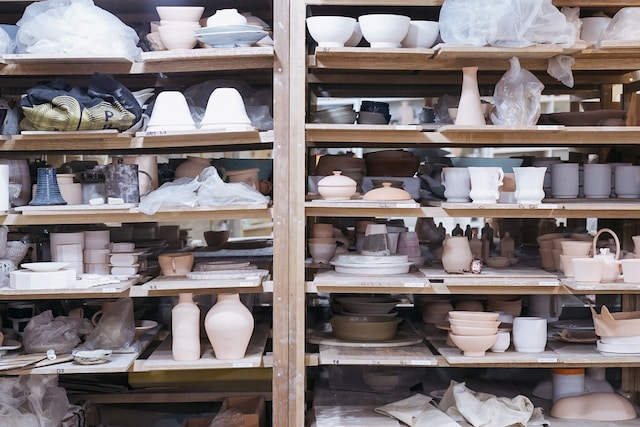
The day begins as you head toward Monte Alban on 190 out of Oaxaca. Taking signs toward Atzompa, you turn right past the Liverpool Mall and follow signs to Santa Maria Atzompa, a town known for its intricate ceramic artistry. Head toward Mercado de Artesanias on the main drag, Avenida Libertad. Enjoy this one-stop shop for ceramics created by local artisans. As you wander the aisles, each turn offers the opportunity to admire these unique pieces. Pick up a hand-crafted mug or dish to remember your journey, but make sure to leave room for the rest of the day’s treasures.
Once you’ve sated your appetite for art, head to your local Oxxo just back down the street. Think of this as the 7-11 of Mexico. An essential pitstop on any day trip from Oaxaca, these convenience stores are perfect for stocking up on drinks and snacks. While you’re there, consider picking up some local snacks like spicy peanuts or chicharrónes (fried pork rinds) to keep you fueled for the day ahead.
Get Your Travel Goals Newsletter & BONUS Workbook
Just across the street from the Oxxo you’ll take Calle Miguel Cabrera westward all the way up until the road stops and you turn left on Independencia. Follow that all the way to the exit for the archeological zone of Atzompa. There is free parking available and someone to assist you with directions to the entrance to the site.
Atzompa
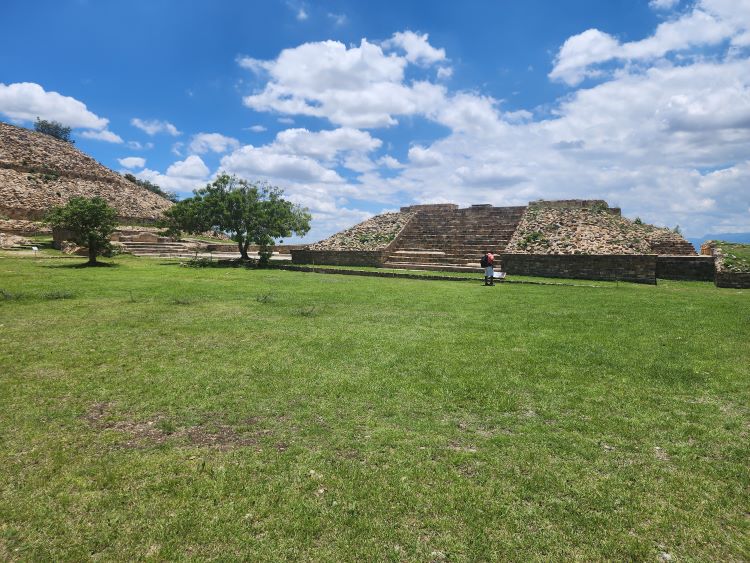
The ruins of Atzompa, while not as popular as Monte Alban, are definitely worth a visit and something of a gift for those of you who appreciate the ability to hike ruins and have them practically to yourself. Atzompa is a relatively recently discovered and opened archaeological site in Oaxaca that offers a more secluded peak into the world of the ancient Zapotec civilization. Thought to have been established sometime around 650 AD, the site was opened to the public in 2012 after years of careful excavation.
Atzompa was a satellite city of the larger Monte Albán, serving as an essential residential, ceremonial, and economic center during the Late Classic Period (650-850 AD). This newer site shares architectural and cultural similarities with Monte Albán, making it an intriguing introduction to the experience of the more famous ruins just a few miles away.
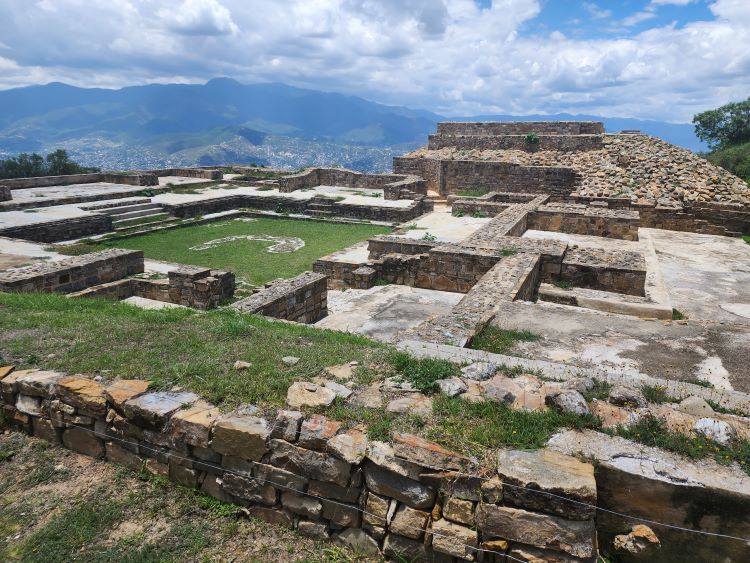
One of the aspects that makes Atzompa so special is its unique three-tiered complex, which archaeologists believe served ceremonial and administrative functions. Atzompa is also home to an unusual, fully preserved pottery kiln, an invaluable discovery that provides insight into ancient ceramic-making practices. Given that the region of Atzompa is still renowned for its green-glazed pottery, this discovery ties the modern town that you just visited with its ancient roots, offering a tangible connection to the past.
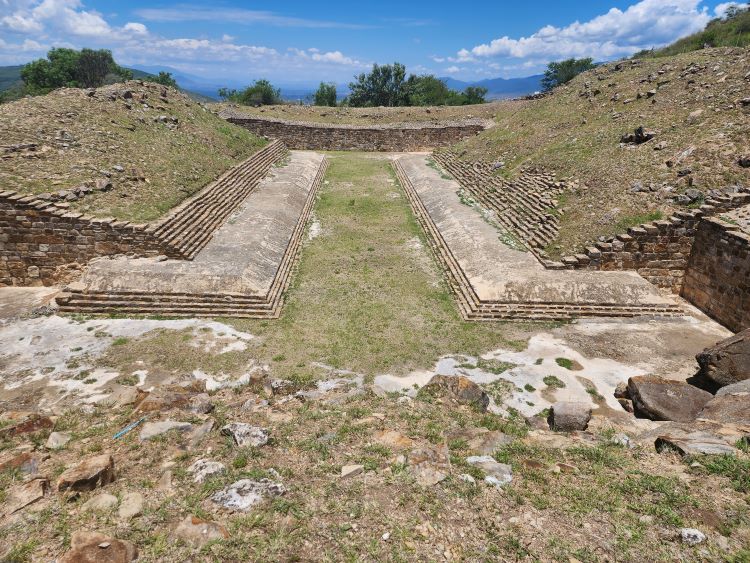
What’s more, Atzompa boasts the largest ball court in the region. The size and location of the court signify the importance of the ballgame in the social and religious practices of the Zapotec culture.
The site offers a series of unexcavated mounds, allowing visitors to get a sense of how archaeologists continue to discover and unearth these culturally significant areas. Unlike the popular Monte Albán, the relatively quiet and less crowded Atzompa offers a more intimate experience with Zapotec history.
In essence, Atzompa is a treasure trove of history, culture, and archaeological intrigue. Its unique architecture, less crowded paths, and the allure of newly discovered historical knowledge make it an attractive and rewarding destination for history enthusiasts and curious travelers alike. It provides an enriching introduction to the experience of Monte Albán and the opportunity to delve deeper into the fascinating story of the Zapotec civilization.
Get Your Travel Goals Newsletter & BONUS Workbook
Tip – No food or drink is allowed at the site as the environment is delicate and local caretakers wish to dampen the impact any invasive species such as stinging wasps and ants, who are attracted to sugary drinks and food, could have on your visit or the area. So any snacks you’ve purchased can stay safely in your car.
Monte Alban
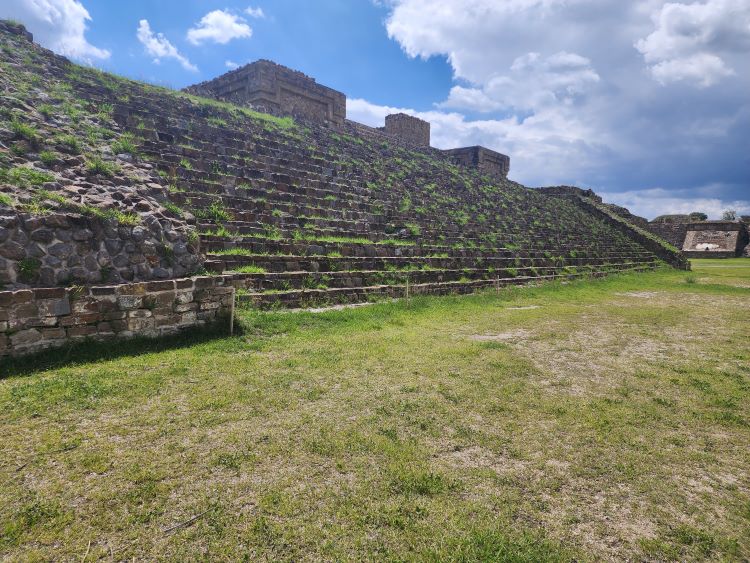
Just 15 minutes by car from Atzompa is the Zapotec ruin of Monte Alban. Named one of the most important archeological sites in Oaxaca, you will not be alone when visiting these ruins. One of the most significant archaeological sites in the Americas, it is speculated that Monte Alban was founded in 500 BC. This ancient city lies atop a series of mountainous plateaus and you can see it nestled on the mountaintop from Atzompa’s nearby ruins.
Once established, Monte Albán became the political and economic center for the Zapotec people for close to a thousand years. The city flourished from 300 BC to 200 AD and was home to architects, farmers, priests, and astronomers. It’s believed that at its peak, Monte Albán had a population of about 35,000, making it one of the first major cities in Mesoamerica.
Get Your Travel Goals Newsletter & BONUS Workbook
What makes Monte Albán particularly special is its array of structures and monuments. The site includes over 2,000 terraces, a ball court, numerous tombs richly decorated with carvings and murals, and many ceremonial altars and buildings, including the Grand Plaza. The Plaza was the heart of Monte Albán, used for ceremonies and perhaps as a marketplace.
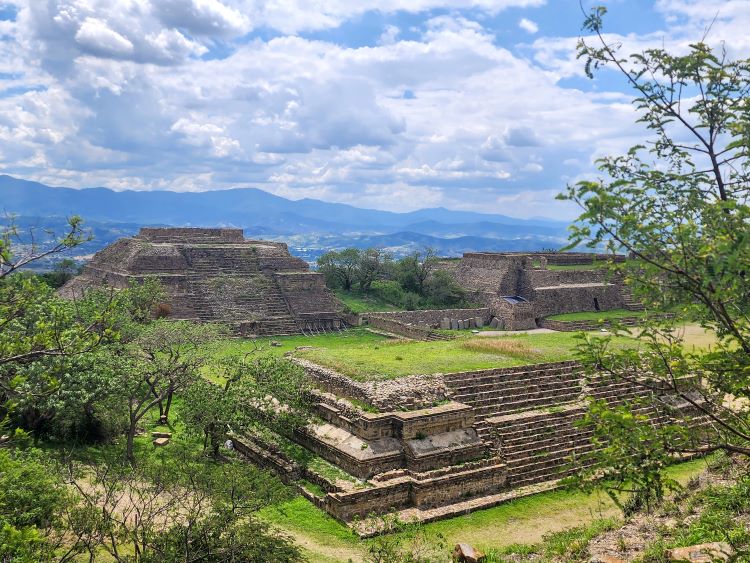
Another unique feature of Monte Albán is the wealth of engraved stone tablets, known as the ‘Danzantes’ (dancers). These stones display naked figures in contorted and twisted poses, which initially led them to be incorrectly identified as dancers. Archaeologists now believe these figures represent war prisoners.
Monte Albán is also notable for its astronomical observatory, one of the earliest in Mesoamerica. The observatory is evidence of the Zapotec’s advanced understanding of celestial bodies. They used this knowledge to develop a calendar system and choose optimal times for planting and harvesting crops.
Visitors to Monte Albán can experience the unique blend of history, culture, and science that the site offers. The ruins are remarkably well-preserved and provide a fascinating insight into the Zapotec civilization. Touring the site is like walking through a living history book, offering a tangible connection to the ancient world.
Get Your Travel Goals Newsletter & BONUS Workbook
Besides the allure of the historical and cultural riches, the site’s mountaintop location offers some of the most stunning panoramic views in all of Oaxaca. The sense of tranquility combined with the visual spectacle makes Monte Albán a truly memorable experience.
If you are comfortable with driving on unpaved roads consider a lunch stop at the welcoming Cosina El Buen Sabor. Tucked away on a quiet dirt road, this hidden gem offers an intriguing blend of Oaxacan and Asian flavors. The owner, having spent time in San Jose, California, brings a unique twist to the table.
Relish in the surprisingly delightful combination of local ingredients prepared in a style reminiscent of San Jose’s Asian cuisine. The yummy orange chicken, flavorful wings, and fried rice are particular taste-pleasers, and worth every minute spent navigating the dirt roads to get there. With your appetite satiated, you’ll be ready for the next leg of your unforgettable journey.
Arrazola
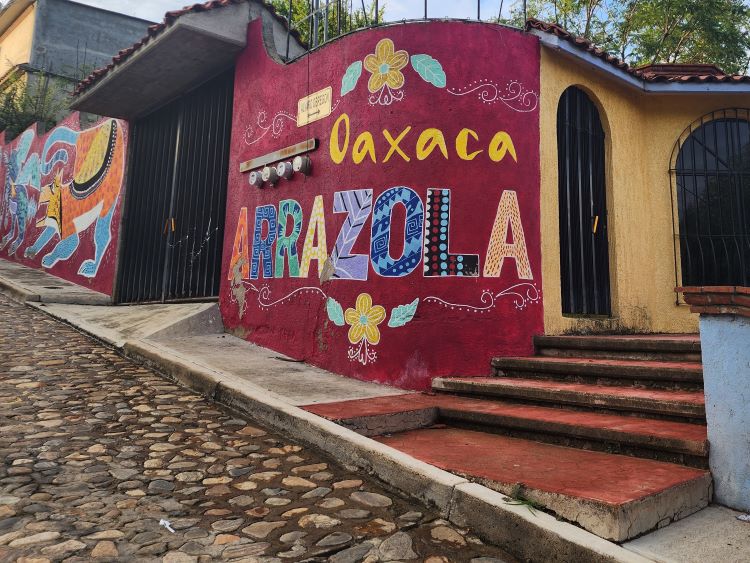
As the day trip takes a turn back toward Oaxaca City, the charming town of Arrazola, nestled at the foot of the mountains of Oaxaca, comes into view. Arrazola is known for an art form that has found recognition on the global stage – alebrijes. These handcrafted, brightly painted fantastical creatures, born from the imaginations of the town’s artisans, have put Arrazola firmly on the map of must-visit destinations in Oaxaca.
Arrazola’s history is deeply intertwined with the creation of alebrijes. This art form was introduced by Pedro Linares Lopez in Mexico City, but it was Manuel Jimenez Ramirez of Arrazola who popularized it in Oaxaca and introduced the use of copal wood instead of paper-mâché for their creation. Today, Arrazola and its artisans continue the tradition, and it seems like every home in the town is involved in some way with the crafting of alebrijes, a testament to the town’s artistic spirit.
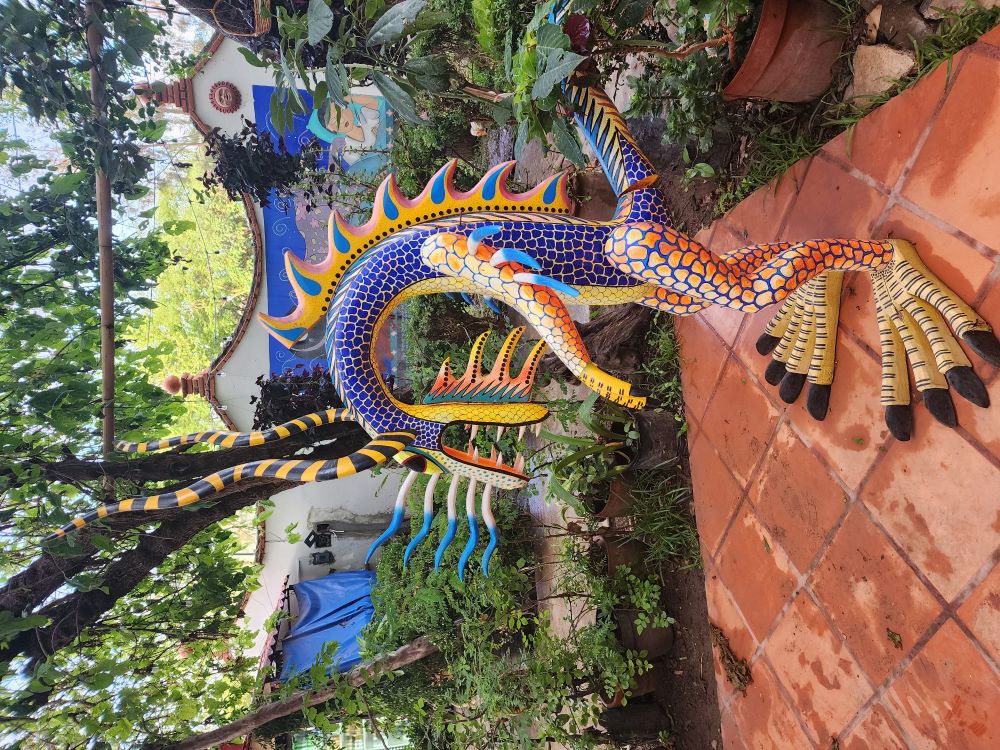
One of the focal points of a visit to Arrazola is the Casa Museo Don Manuel Jimenez, a museum dedicated to the life and work of the legendary alebrije artist. Here, visitors can explore a rich collection of alebrijes, learning about the intricate process of their creation, from the carving of the copal wood to the detailed and vivid painting. The museum is also the home of the Jimenez family, who continue the legacy of Don Manuel. The family still crafts alebrijes, and visitors have the unique opportunity to witness the artisans at work, and even participate in a workshop to create their own alebrije.
The cobbled streets of Arrazola lead visitors to numerous shops where you can meet local artists, observe them at work, and purchase an alebrije as a colorful memento of the visit. The town’s scenic beauty, the warmth of its people, and its artistic culture offer a truly enriching and authentic Oaxacan experience.
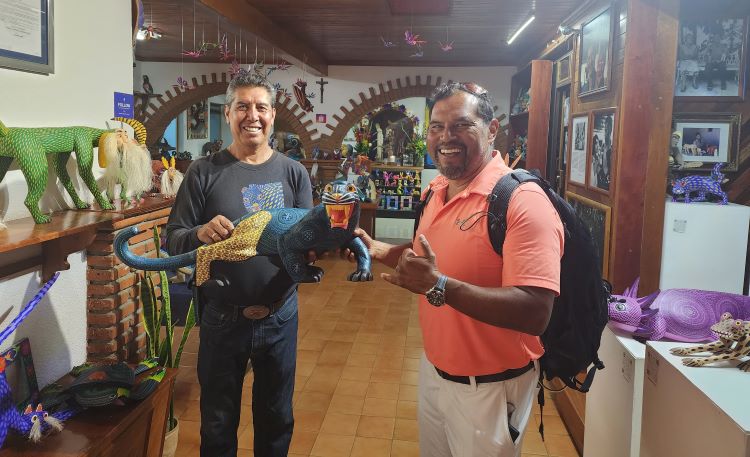
Wrapping up your unforgettable day trip, you’ll find yourself happy and hopefully quite satisfied. From the ceramic masterpieces of Santa Maria Atzompa, the ancient allure of Atzompa and Monte Alban ruins, to the imaginative alebrijes of Arrazola, every stop has its own unique charm and allure.
Arrazola, with its enchanting streets filled with artisan workshops and the creative energy of the Casa Museo Don Manuel Jiminez, invites you into a modern world of color and imagination. On the other hand, the ruins of Atzompa and Monte Alban provide a window into the past, where every stone and artifact narrates a tale of the region’s rich history.
This adventure around Oaxaca is an exploration of the area’s rich artistic tradition and a step back in time through the region’s history. It’s an experience that shows why this region is so beloved to those who have had the pleasure of discovering it.
